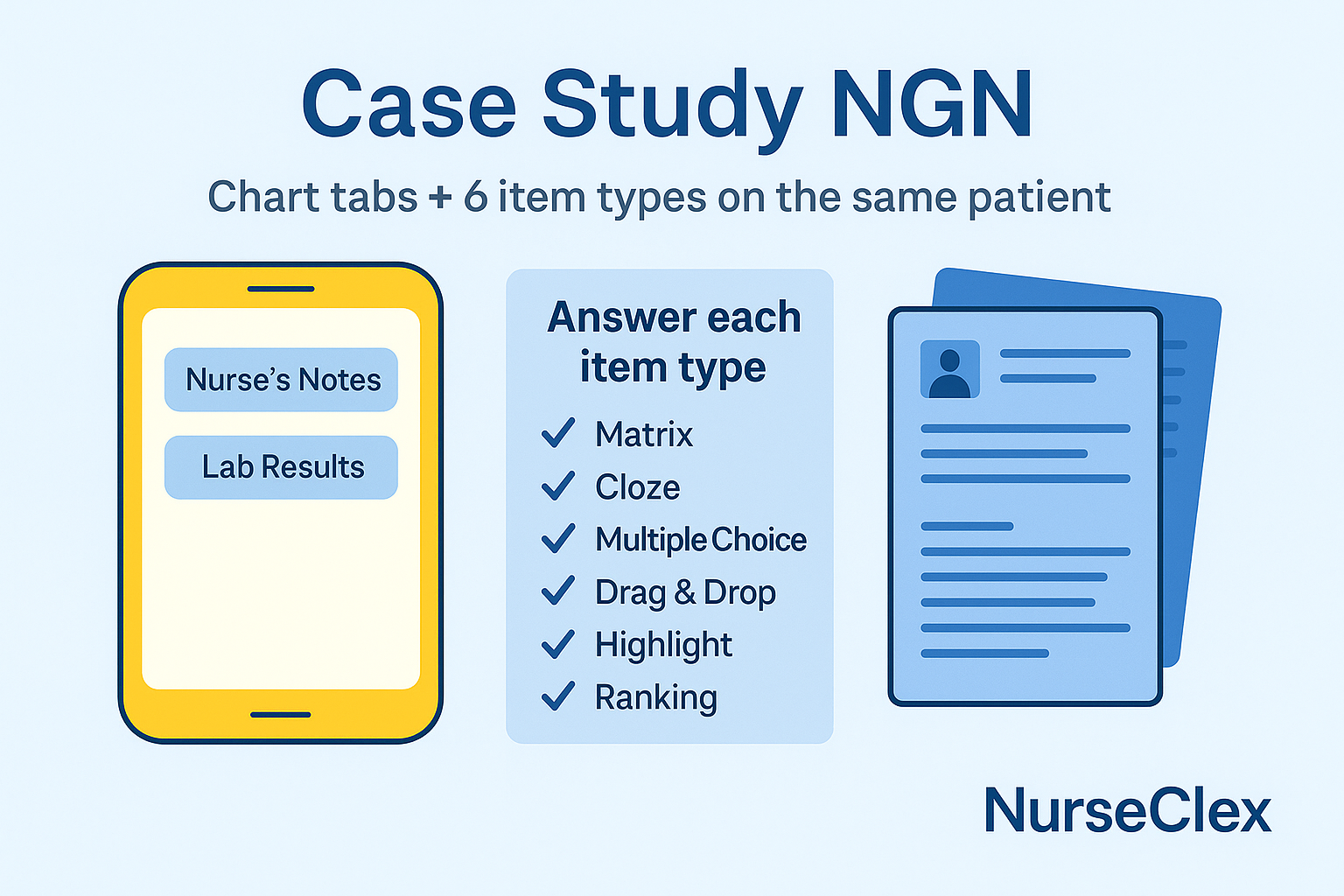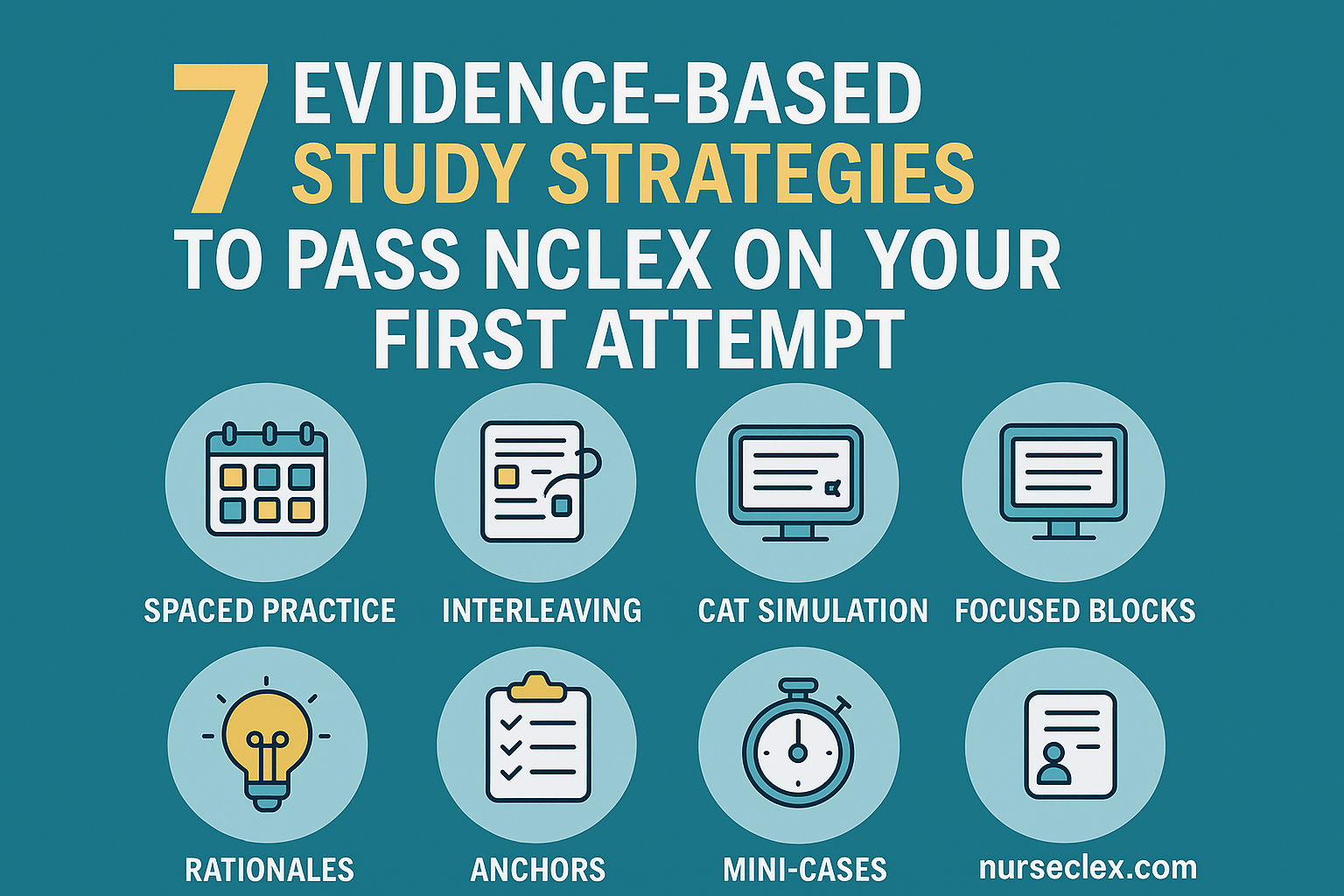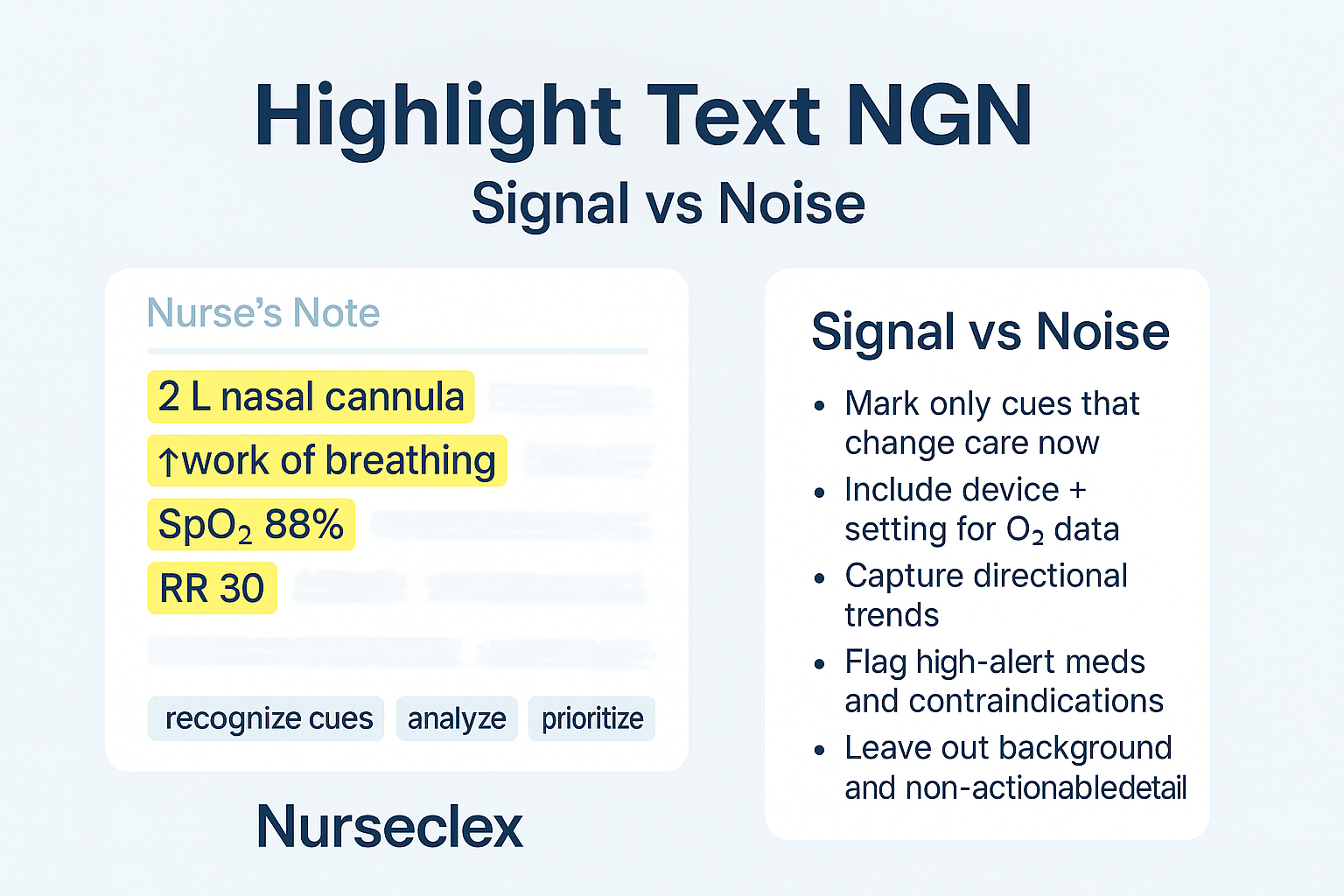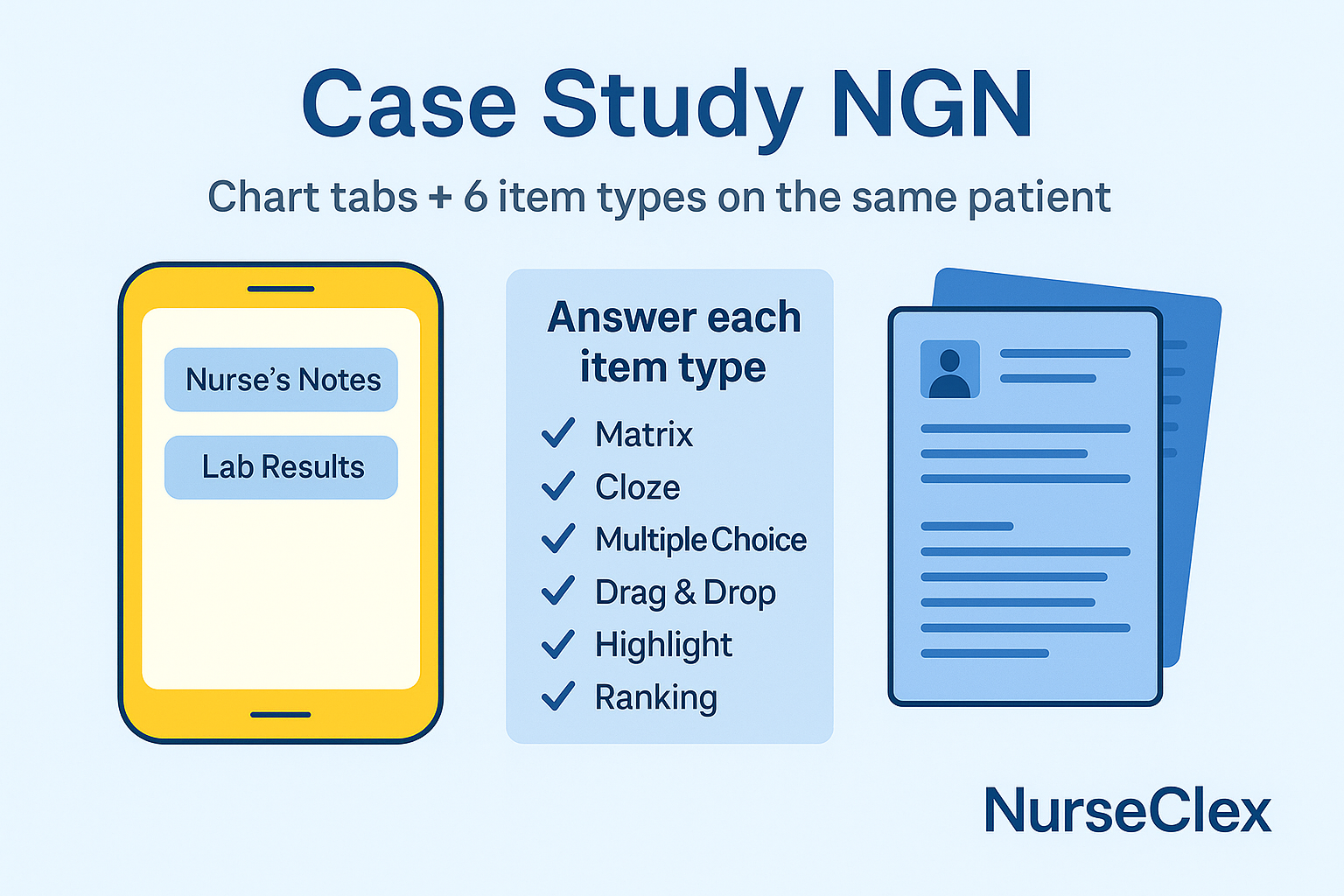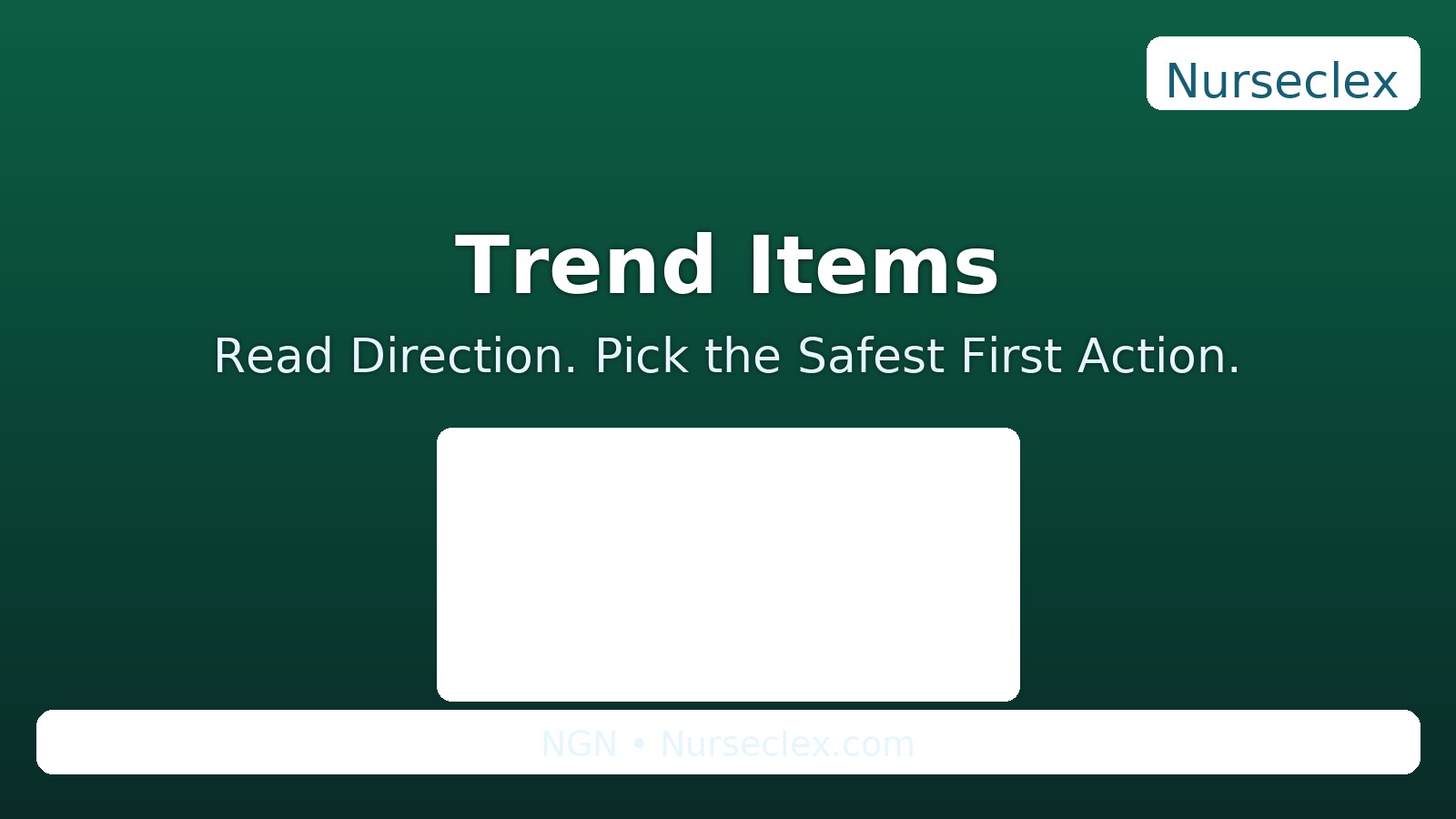One-sentence definition (featured snippet)
Cloze items NGN asks you to select the best phrase in one or more drop-downs; many award partial credit across blanks when you lock the safe, indicating choices.
New to NGN logic? Warm up with Cue Recognition, Analysis & Prioritization, and how to bank points in NGN Partial Credit. For the official test structure, skim the Next Gen NCLEX overview on the NCSBN site.
The three-pass method (simple and reliable)
-
Sure: choose anything clearly required (e.g., contact precautions for C. diff) and avoid anything clearly unsafe (e.g., IM injection on heparin).
-
Probable: From the remaining choices, pick phrases that fit the stem’s current priority—oxygenation, perfusion, neuro.
-
Eliminate: Remove duplicates, wrong-time actions (education before stabilisation), or out-of-scope assignments.
Why this wins: You lock partial credit early and prevent one unsafe pick from undoing a whole set.
Language patterns that score (memorize these)
-
Device + setting > vague action: “Switch to Venturi mask 35%” beats “increase oxygen”.
-
Action + monitoring pair: “Start heparin infusion” → “Check aPTT per protocol.”
-
Stabilise, then teach: “High-Fowler’s + escalate O₂” comes before inhaler teaching.
-
Trend verbs: “Reassess SpO₂/RR in 10 min,” “Recheck BG in 15 min.” “Repeat neuro check now.”
Worked cloze example (oxygenation)
Stem: COPD client with ↑ work of breathing; SpO₂ 88% on 2 L NC.
-
Blank 1 (position): High-Fowler’s
-
Blank 2 (device/flow): Escalate to Venturi mask per protocol
-
Blank 3 (monitoring): Reassess SpO₂ and RR in 5–10 minutes
Why: Treat current hypoxaemia first; pair device change with time-bound reassessment.
Worked cloze example (anticoagulation)
Stem: New heparin infusion for DVT.
-
Blank 1: Verify baseline aPTT
-
Blank 2: Start infusion per protocol
-
Blank 3: Keep protamine available
-
Blank 4: Assess gums/urine/stool for bleeding
Why: Required baseline + protocol + reversal + targeted monitoring.
Quick table: scope & safety clues for close items
| Cue pattern | Usually preferred phrase |
|---|---|
| Unstable patient (hypoxia, neuro change) | Positioning + device escalation + reassessment time |
| High-alert meds (heparin, insulin) | Protocol dose, required monitoring, reversal available |
| Infection control (C. diff, TB) | Correct isolation and hand hygiene type (soap & water for spores) |
| Delegation | RN = assess/teach/evaluate; LPN = stable/routine meds; UAP = ADLs, stable vitals |
Mini-drills (answer fast)
Pick the best phrase for each blank:
-
“SpO₂ 91% → 88% on the same device.”
-
Best: “Increase to Venturi 35% and reassess SpO₂ in 10 minutes.”
-
-
“Heparin infusion started 2 h ago.”
-
Best: “Check aPTT and monitor for bleeding; keep protamine available.”
-
-
“Suspected C. diff.”
-
Best: “Contact precautions; soap & water hand hygiene.”
-
Common pitfalls (fix them instantly)
-
Vague verbs (“monitor closely”) → say what, how often, and why.
-
Teaching too early → stabilise first.
-
Scope drift → don’t assign RN-only tasks to UAP/LPN.
Build speed on cloze items in NGN with scored drills and rationales.
Create a free account Nurseclex
Image (hero)
Title: “Close: Sure → Probable → Eliminate”
Alt: “Three-step flow for cloze items NGN with drop-down phrases and safety checks”
Internal links (natural pathways)
See how Cloze fits with trend items and row-level scoring in Matrix Multiple Response. Brush up your priority rules in Analysis & Prioritisation.
FAQs
Do all closed items use partial credit?
Many do, especially multi-blank sets, but always choose safe phrases either way.
Should I pick the longest, most detailed phrase?
Not if it’s not indicated now. Choose the safest, least invasive phrase that fits the current priority.
How do I avoid contradictions across blanks?
Read once for coherence before you submit.
